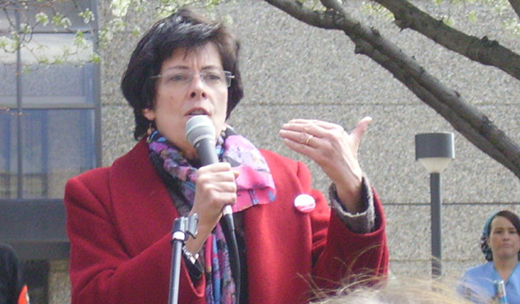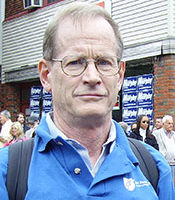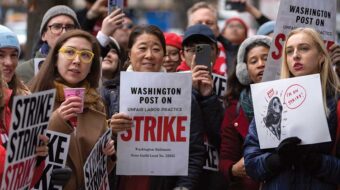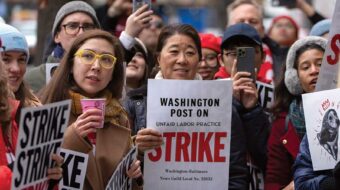
They worked without a contract for seven months. Finally, on April 1 after their employer announced a unilateral change in the terms of their employment, the 1500 nurses and technical workers at Temple University Hospital went on strike. After nearly a month on the picket line, numerous rallies, visits to City Council and other outreach efforts, they brought the hospital administration to the table and won a contract. And last week, the Pennsylvania Bureau of Unemployment Compensation ruled in their favor and that they were due jobless pay for their time away from work.
This vindication of the union’s position capped a months long many sided struggle. The Pennsylvania Association of Staff Nurses and Allied Professionals (PASNAP) waged a campaign to persuade the public and the press that they were fighting to preserve working conditions that protected and benefitted both patients and workers. Issues of staffing levels and the administration’s attempt to return to unlimited shift rotation were among the bones of contention. As the months dragged on, the hospital added new demands and increased the pressure on the union. A particular provocation was the administration’s attempt to impose a legal “gag order” which would have barred workers from publicly criticizing administration practices at the hospital.
The issue that proved to the PA Compensation Board that the administration had provoked the strike was their decision to stop the highly valued tuition benefit for members’ children and dependents. Temple originally announced in March of 2009 that it intended to drop the benefit as of June 2010. When, in March of this year, the hospital refused a union offer to continue working under the terms of the previous contract, including the tuition policy, the union announced the strike date.
PASNAP president Patricia Eakin spoke with the World after the settlement, but before the Board’s favorable decision. She emphasized that the union had succeeded in protecting hard won gains, in resisting a newly aggressive management negotiating stance exemplified by the gag order demand, and in defeating the open shop. The union also won raises totaling 7.5 percent over three years. She felt that a key factor was the union’s determination to include representation from all job categories on the negotiating committee. The difficult decision to go out when they did had deep support from the diverse membership as a result. The strike had strong support throughout and resulted in dramatically raising the level of trade union and political consciousness among the membership.
Eakin also credited active support from the Philadelphia labor movement, which led to the passage of a resolution of support from the City Council, as a major factor in the outcome. She also felt that the strike spotlighted the challenges and the broader issues in healthcare and showed that “more than ever, we need a national healthcare system. Single payer is the only logical way to save money and have quality care.”
.












Comments